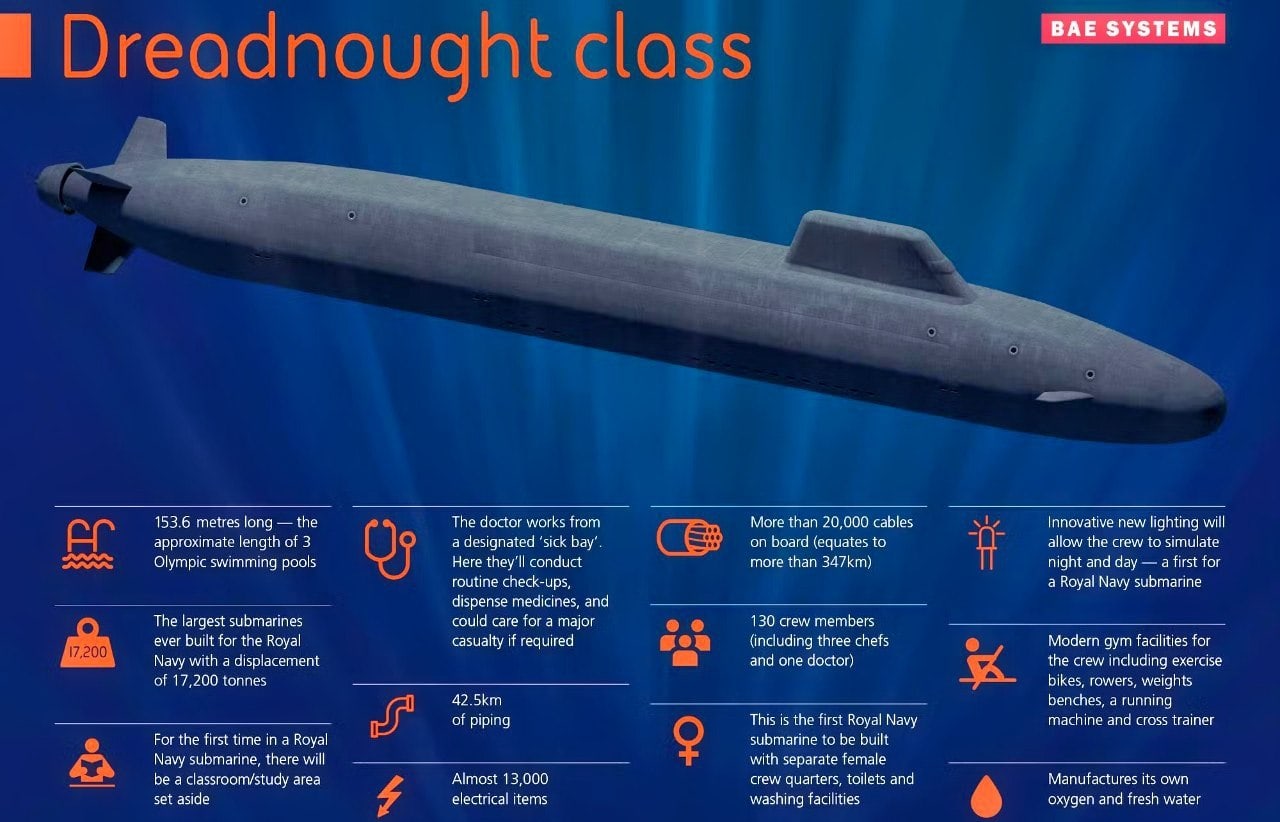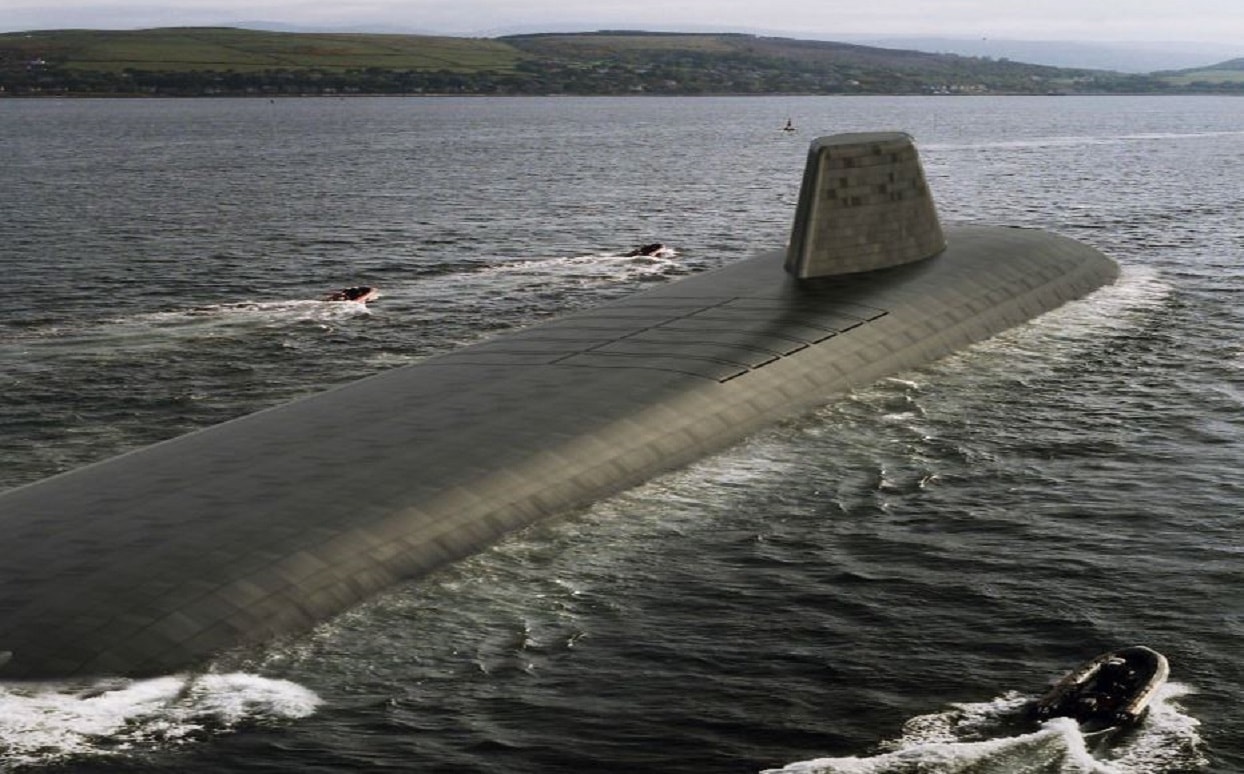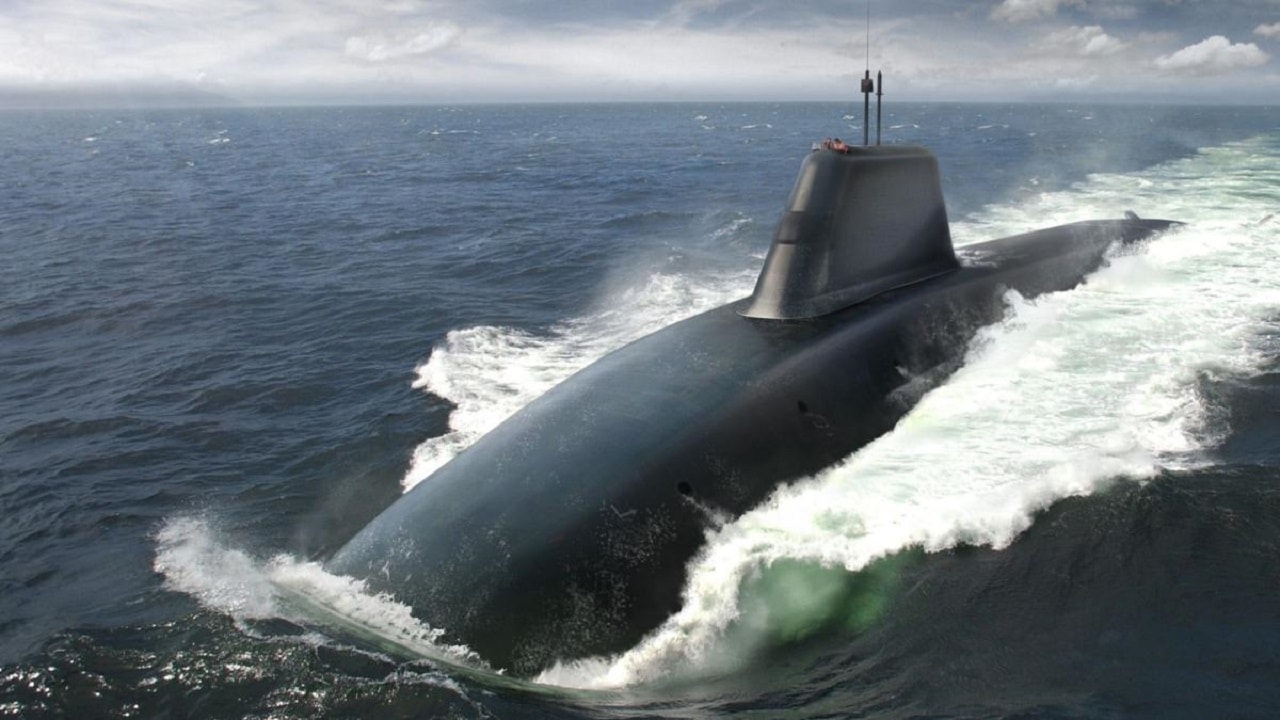Article Summary: The Royal Navy’s Dreadnought-class submarines are the UK’s next-generation nuclear-armed deterrents, replacing the aging Vanguard-class. Their mission is to ensure Russia and China stay deterred.
Key Point #1 – Built with electric-drive propulsion, advanced stealth designs, and the Common Missile Compartment shared with America’s Columbia-class, these subs will ensure continuous at-sea deterrence. Featuring BAE’s Active Vehicle Control Management system, a quieter X-shaped stern, and enhanced sonar, the Dreadnought will be harder to detect than ever before.
Key Point #2 – As China and Russia advance their undersea detection capabilities, the UK and US are modernizing their fleets to stay ahead.
Dreadnought-Class: The Royal Navy’s Answer to Russia & China’s Threats
The United Kingdom is surging ahead with development of its nuclear-armed Dreadnought-class submarines. These subs are designed to replace the Royal Navy’s Vanguard-class and carry Trident II nuclear missiles to the hidden realms of the undersea domain.
Deterrence rests on a paradox, as weapons capable of incredible destruction are deployed to “keep the peace.” The assurance of a crippling retaliatory strike is intended to prevent a would-be nuclear attacker from thinking it could somehow prevail by launching the first nuclear strike and then surviving. Submarines carrying nuclear weapons guarantee that retaliation.
Given the rapid pace at which China is adding to its nuclear arsenal, and technological improvements such as next-generation submarine-detection technology from both Russia and China, the United Kingdom and United States both need to modernize their undersea deterrents.
Much like the U.S. Navy’s Ohio-class submarines, the UK’s Vanguard-class needs a higher-tech, quieter replacement. The Vanguard-class entered service in the 1990s and was intended to operate for 25 years. Much like the Ohio, it has been extended well beyond its anticipated lifespan. And much like the U.S., the UK urgently needs to maintain what it calls a continuous at-sea deterrent.
Common Missile Compartment
Technology being built into the UK’s Dreadnought-class boats will line up with the U.S. Navy’s emerging Columbia-class submarines, which are in development to replace the Ohio-class. Perhaps the most significant element of this alignment is the jointly developed Common Missile Compartment.
The Columbia-class and Dreadnought-class will use the same midsection module to house nuclear missiles.
There are likely to be other technologies shared between the two submarines, such as a quieter X-shaped stern, and fly-by-wire automated computerized navigational systems.
The Columbias are being built with a handful of technologies first woven into Virginia-class boats, such as fiber-optic cables, a large aperture bow sonar, and a fly-by-wire joystick-controlled navigational system.
This system uses computer automation and a joystick to maintain depth, speed, and angle, while a human operator performs command-and-control. It replaces hydraulic mechanical systems and adds a new level of navigational precision and stability.
The UK equivalent is a BAE system called Active Vehicle Control Management, an innovation a BAE essay describes as “adapting controls that are usually used in fly-by-wire aircraft and applying them in a marine environment.” The electronics, developers explain, will be used to control the heading, pitch, depth, and buoyancy of the future submarines.
Design and propulsion
Like the Columbia-class, the Dreadnought submarines will use a quieter electric-drive propulsion system that increases propulsion efficiency and stability and helps generate additional power for the electrical systems on the boat.
New design models of the Dreadnought have recently been released by BAE and the Royal Navy, and they show a revised bow and a different configuration than was previously planned. There are few specifics available, but the Royal Navy has published limited specifications for the boat, including a displacement of 18,600 tons and a length of 504 feet.
According to an essay at Bulgarian Military, the design will improve stealth, maneuverability, and combat effectiveness.

Dreadnought-Class Submarine Royal Navy BAE Systems Image
“The hull of the model exhibits a smooth, cylindrical profile that reduces hydrodynamic resistance and facilitates silent underwater movement,” the publication says. “The submarine features an elliptical bow designed to enhance laminar water flow, reducing its acoustic signature. This is crucial for strategic submarines, which must remain undetected during long-duration missions.”

Dreadnought-Class Submarine. Image: Creative Commons.
About the Author: Kris Osborn
Kris Osborn is the Military Technology Editor of 19FortyFive and President of Warrior Maven – Center for Military Modernization. Osborn previously served at the Pentagon as a highly qualified expert in the Office of the Assistant Secretary of the Army—Acquisition, Logistics & Technology. Osborn has also worked as an anchor and on-air military specialist at national TV networks. He has appeared as a guest military expert on Fox News, MSNBC, The Military Channel, and The History Channel. He also has a Masters Degree in Comparative Literature from Columbia University.

